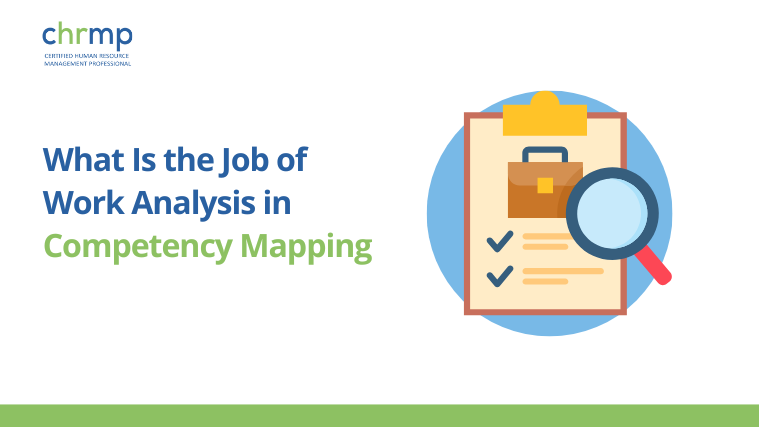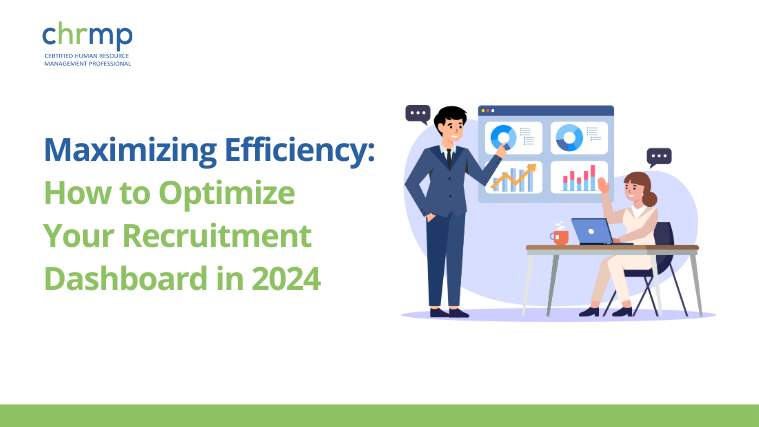Why Recruitment Dashboards Matter
A well-structured recruitment dashboard is a crucial tool for HR professionals, providing a centralized platform to monitor and optimize the entire hiring process. In today’s fast-paced recruitment landscape, where data-driven decisions are paramount, leveraging a recruitment dashboard template can significantly enhance your efficiency. These dashboards offer a comprehensive view of your key recruitment metrics, allowing you to track the performance of your hiring strategies in real-time.
By using a recruitment metrics dashboard, HR teams can easily monitor essential KPIs, such as time-to-hire, cost-per-hire, and candidate source effectiveness. This insight is vital for making informed decisions that can reduce hiring costs and improve the quality of hires. Whether you’re using a sophisticated tool or a recruitment dashboard Excel template, the objective remains the same: to streamline your recruitment process and make it more transparent.
For those starting out, a recruitment dashboard sample or a recruitment dashboard template Excel can serve as a practical starting point. These templates can be customized to fit your organization’s unique needs, ensuring that you’re tracking the most relevant data. As you grow more familiar with the system, you might explore more advanced options like a recruitment tracker dashboard or even a recruiting analytics dashboard to gain deeper insights.
Moreover, the effectiveness of a recruitment dashboard lies in its ability to transform raw data into actionable insights. For instance, a recruitment funnel dashboard can help visualize the stages candidates go through, highlighting any bottlenecks or inefficiencies in the process. This level of analysis is critical for optimizing your recruitment strategy and achieving better outcomes.
Ultimately, the right recruitment dashboard—whether it’s a simple HR recruitment dashboard Excel template or a more complex talent acquisition dashboard template—enables HR teams to align their hiring practices with business goals. By continuously refining and updating your recruitment KPI dashboard, you ensure that your organization remains agile and competitive in the ever-evolving job market.
Understanding the Basics: What is a Recruitment Dashboard?
A recruitment dashboard is a dynamic tool that aggregates and displays key hiring metrics in a visual, easily digestible format. For HR professionals, particularly those new to the field, understanding the basic components of a recruitment dashboard is essential for effective hiring management. This section will break down what a recruitment dashboard is and how it can be used to enhance your recruitment process.
At its core, a recruitment dashboard template is designed to provide a snapshot of your hiring process at any given time. It typically includes a range of metrics, such as time-to-fill, cost-per-hire, and the effectiveness of different recruitment channels. These metrics are vital for evaluating the success of your hiring strategies and identifying areas for improvement.
A recruitment metrics dashboard allows HR teams to track these critical indicators over time, offering insights that can guide strategic decisions. For example, by analyzing data through a recruitment tracker dashboard, you can pinpoint where candidates drop out of the hiring funnel and adjust your strategy to address these issues.
For those who prefer working with spreadsheets, a recruitment dashboard Excel template offers a customizable solution. This approach allows HR teams to manually input and track their data, providing flexibility in how metrics are displayed and analyzed. Templates like the HR recruitment dashboard Excel template or recruitment KPI template Excel are particularly useful for smaller teams or those just beginning to implement data-driven recruitment practices.
Additionally, using a recruitment dashboard sample can help you understand the different ways to visualize your recruitment data. Whether you’re focusing on basic metrics or exploring more complex analytics, such as those found in a recruiting analytics dashboard, samples can provide a reference point for setting up your own dashboard.
To ensure that your dashboard is effective, it’s important to select the right metrics to track. A recruitment KPI dashboard typically includes metrics like the number of applications, interview-to-hire ratio, and candidate satisfaction rates. These metrics provide a comprehensive view of your recruitment efforts and help you stay aligned with your organization’s goals.
In summary, a recruitment dashboard—whether in the form of an Excel template or a more advanced recruitment funnel dashboard—is a vital tool for any HR professional. It enables you to monitor and optimize your hiring process, ensuring that your recruitment strategies are both efficient and effective. By familiarizing yourself with these dashboards and the metrics they track, you’ll be better equipped to manage your organization’s talent acquisition efforts.
Why Recruitment Dashboards Are Essential
In the evolving landscape of HR, different types of recruitment dashboards serve distinct purposes, each offering unique benefits tailored to specific aspects of the hiring process. Whether you’re managing costs, tracking time-to-hire, or enhancing diversity, each recruitment dashboard template plays a crucial role in optimizing your recruitment strategy. By leveraging these dashboards, HR professionals can gain deeper insights, improve efficiency, and align their hiring efforts with broader organizational goals.
- Track and Optimize Key Hiring Metrics: Different dashboards, like a recruitment metrics dashboard, help HR teams monitor critical hiring metrics such as time-to-fill and cost-per-hire. For instance, a recruitment dashboard that tracks time-to-fill allows HR professionals to identify and eliminate delays in the hiring process, thereby speeding up recruitment and minimizing the impact on organizational productivity.
- Control and Reduce Recruitment Costs: A recruitment tracker dashboard is particularly beneficial for managing and reducing recruitment expenses. By using a recruitment dashboard Excel template to track cost-per-hire, HR teams can identify where their budget is most effectively spent and where it might be wasted. For example, if the data reveals that a particular job board is not yielding quality candidates, those funds can be redirected to more effective channels, leading to more cost-efficient recruitment.
- Promote Diversity and Inclusion: A recruitment funnel dashboard is invaluable for tracking diversity metrics at each stage of the recruitment process. By utilizing a recruiting analytics dashboard to monitor these metrics, HR professionals can ensure that hiring practices are equitable and free from bias, which supports corporate diversity initiatives and fosters a more inclusive workplace. This dashboard helps identify and address any potential biases, making sure that the recruitment process aligns with the organization’s diversity goals.
- Maximize the Effectiveness of Recruitment Channels: A recruitment KPI dashboard allows HR teams to evaluate the performance of various recruitment channels, such as job boards, social media, and employee referrals. For instance, if an HR recruitment dashboard template shows that employee referrals consistently result in higher-quality hires, the organization can choose to invest more in referral programs. This targeted approach ensures that resources are allocated to the most effective channels, maximizing the return on investment.
- Increase Offer Acceptance Rates: Analyzing offer acceptance rates through a talent acquisition dashboard template provides insights into how competitive your job offers are. If a recruitment dashboard reveals a low acceptance rate, it may indicate that your compensation packages need to be more competitive. By addressing this, HR teams can increase the likelihood that top candidates will accept their offers, improving overall hiring success.
- Enhance Employee Retention: Monitoring employee turnover through a recruitment dashboard Excel template is essential for understanding the long-term success of your recruitment efforts. High turnover rates can be a red flag for underlying issues such as poor job fit or inadequate onboarding. By identifying these issues early with the help of a recruitment dashboard, HR professionals can implement strategies to improve retention, such as refining onboarding processes or offering additional training opportunities.
Each recruitment dashboard, whether a recruitment KPI template Excel or a recruitment tracker dashboard Excel download, provides unique insights that are vital for refining your recruitment strategy. By understanding and utilizing the specific benefits of each dashboard, HR professionals can make data-driven decisions that enhance the efficiency and effectiveness of their recruitment processes, ultimately driving better outcomes for the organization.
Key Metrics to Include in Your Recruitment Dashboard
A well-structured recruitment dashboard is vital for tracking and optimizing your hiring process. By including the right metrics in your recruitment dashboard template, HR professionals can gain actionable insights that drive recruitment efficiency and effectiveness. Below are four essential metrics that every recruitment metrics dashboard should feature, along with two advanced metrics that have become critical in 2024.
- Time-to-Hire: This metric measures the number of days it takes from when a candidate first applies to when they accept a job offer. It is a key indicator of the efficiency of your recruitment process. A shorter time-to-hire indicates an efficient recruitment process, crucial in a competitive job market. By tracking this metric, HR professionals can identify and eliminate delays, leading to faster and more efficient talent acquisition.
- Cost-per-hire: This metric represents the total expense incurred to fill a position, including costs for job advertisements, recruiter fees, and onboarding. Monitoring cost-per-hire enables HR teams to control recruitment expenses and optimize budget allocation. By analyzing this metric, HR professionals can determine which recruitment channels offer the best return on investment and adjust their strategies to reduce costs without compromising on the quality of hires.
- Candidate Source Performance: This metric evaluates the effectiveness of different recruitment channels in generating qualified candidates. It helps HR teams identify which channels are most effective in bringing in top-quality candidates, allowing them to focus resources on the most productive channels and ensure better hiring outcomes.
- Offer Acceptance Rate: This metric measures the percentage of job offers that are accepted by candidates, providing insight into the attractiveness of your job offers. A high offer acceptance rate indicates that your offers are competitive and appealing to candidates. If the rate is low, it may signal that your compensation packages or benefits are not aligned with market expectations, prompting a review and adjustment to improve your success in securing top talent.
Advanced Metrics for 2024
In 2024, the recruitment landscape has evolved, making certain advanced metrics essential for staying ahead of the curve. Here are two critical metrics that should be included in any recruitment dashboard sample or talent metrics dashboard:
- Diversity Hiring Metrics: This metric tracks the representation of different demographic groups throughout the recruitment process. In 2024, promoting diversity and inclusion is a top priority for many organizations.Tracking diversity hiring metrics allows HR teams to ensure that their recruitment practices are inclusive and aligned with corporate diversity goals. This metric also helps identify potential biases in the hiring process and supports the creation of a more diverse and innovative workforce.
- Candidate Experience Score: This metric measures the overall satisfaction of candidates with the recruitment process, from initial application to final decision. A high Candidate Experience Score indicates that your recruitment process is smooth, transparent, and respectful of candidates’ time and effort.This metric is critical in 2024, as candidates increasingly value their experience and are more likely to share their perceptions online. A positive candidate experience can enhance your reputation, attract top talent, and even convert unsuccessful candidates into future applicants or brand advocates.
- Internal Mobility Rate: This metric measures the percentage of job openings filled by existing employees, reflecting how well the organization promotes and utilizes its internal talent. Promoting internal mobility is increasingly recognized as a way to retain talent, reduce hiring costs, and maintain organizational knowledge.Including this metric helps HR teams assess how effectively they are identifying and developing existing talent for new opportunities, enhancing employee satisfaction and reducing turnover.
Step-by-Step Guide to Setting Up Your Recruitment Dashboard
Creating a powerful recruitment dashboard involves selecting the right tools, customizing them to meet your specific needs, and integrating data from various sources to get a comprehensive view of your recruitment process. Below is a detailed guide to help you set up an effective recruitment dashboard in 2024.
- Choosing the Right ToolsSelecting the right tool is the first and most crucial step in setting up your recruitment dashboard. In 2024, several popular tools and software are available, each with its strengths and weaknesses:
- Tableau: A powerful data visualization tool that allows you to create highly customizable dashboards. It’s user-friendly, supports a wide range of data integrations, and offers advanced analytics capabilities, including AI-driven insights.
- Power BI: Known for its robust integration with other Microsoft products, making it a great choice for organizations already using tools like Excel or Azure. It’s cost-effective, offers real-time data updates, and has strong data visualization features.
- Google Data Studio: A free tool that’s easy to use and integrates well with other Google products. Ideal for organizations looking for a cost-effective solution to create basic recruitment dashboards.
- Excel with Advanced Plugins: Widely used, allowing for customizable and powerful dashboards without investing in new software. However, it may require significant manual input and maintenance.
- Zoho Analytics: Offers a user-friendly interface with strong data integration capabilities, making it easy to pull data from various sources like ATS, CRM, and job boards.
- Customization TipsCustomize your recruitment dashboard to align with your specific organizational goals. Identify key metrics, set up alerts for critical thresholds, integrate AI-driven analytics, and tailor visualizations to make data more accessible and actionable.
- Data IntegrationFor your recruitment dashboard to be truly effective, it needs to pull data from various sources to provide a comprehensive view of your recruitment efforts. Ensure integration with Applicant Tracking Systems (ATS), CRM, job boards, and HRIS. For smaller organizations, regular data import routines can help keep your dashboard up-to-date.
By choosing the right tools, customizing your recruitment dashboard to meet your specific needs, and integrating data from multiple sources, you can create a powerful dashboard that provides deep insights into your recruitment process. This will enable you to make data-driven decisions that improve efficiency, reduce costs, and ultimately lead to better hiring outcomes.
Step-by-Step Guide to Setting Up Your Recruitment Dashboard
Creating a powerful recruitment dashboard involves selecting the right tools, customizing them to meet your specific needs, and integrating data from various sources to get a comprehensive view of your recruitment process. Below is a detailed guide to help you set up an effective recruitment dashboard in 2024.
- Choosing the Right ToolsSelecting the right tool is the first and most crucial step in setting up your recruitment dashboard. In 2024, several popular tools and software are available, each with its strengths and weaknesses:
- Tableau: A powerful data visualization tool that allows you to create highly customizable dashboards. It’s user-friendly, supports a wide range of data integrations, and offers advanced analytics capabilities, including AI-driven insights.
- Power BI: Known for its robust integration with other Microsoft products, making it a great choice for organizations already using tools like Excel or Azure. It’s cost-effective, offers real-time data updates, and has strong data visualization features.
- Google Data Studio: A free tool that’s easy to use and integrates well with other Google products. Ideal for organizations looking for a cost-effective solution to create basic recruitment dashboards.
- Excel with Advanced Plugins: Widely used, allowing for customizable and powerful dashboards without investing in new software. However, it may require significant manual input and maintenance.
- Zoho Analytics: Offers a user-friendly interface with strong data integration capabilities, making it easy to pull data from various sources like ATS, CRM, and job boards.
- Customization TipsCustomize your recruitment dashboard to align with your specific organizational goals. Identify key metrics, set up alerts for critical thresholds, integrate AI-driven analytics, and tailor visualizations to make data more accessible and actionable.
- Data IntegrationFor your recruitment dashboard to be truly effective, it needs to pull data from various sources to provide a comprehensive view of your recruitment efforts. Ensure integration with Applicant Tracking Systems (ATS), CRM, job boards, and HRIS. For smaller organizations, regular data import routines can help keep your dashboard up-to-date.
By choosing the right tools, customizing your recruitment dashboard to meet your specific needs, and integrating data from multiple sources, you can create a powerful dashboard that provides deep insights into your recruitment process. This will enable you to make data-driven decisions that improve efficiency, reduce costs, and ultimately lead to better hiring outcomes.
Download Free Guide
Access the Free “50 Key HR Metrics: Mastering Workplace Success” Guide Curated by CHRMP Experts Download Now



